How are museums doing in their goals to diversify collections? Not so hot, says a new report
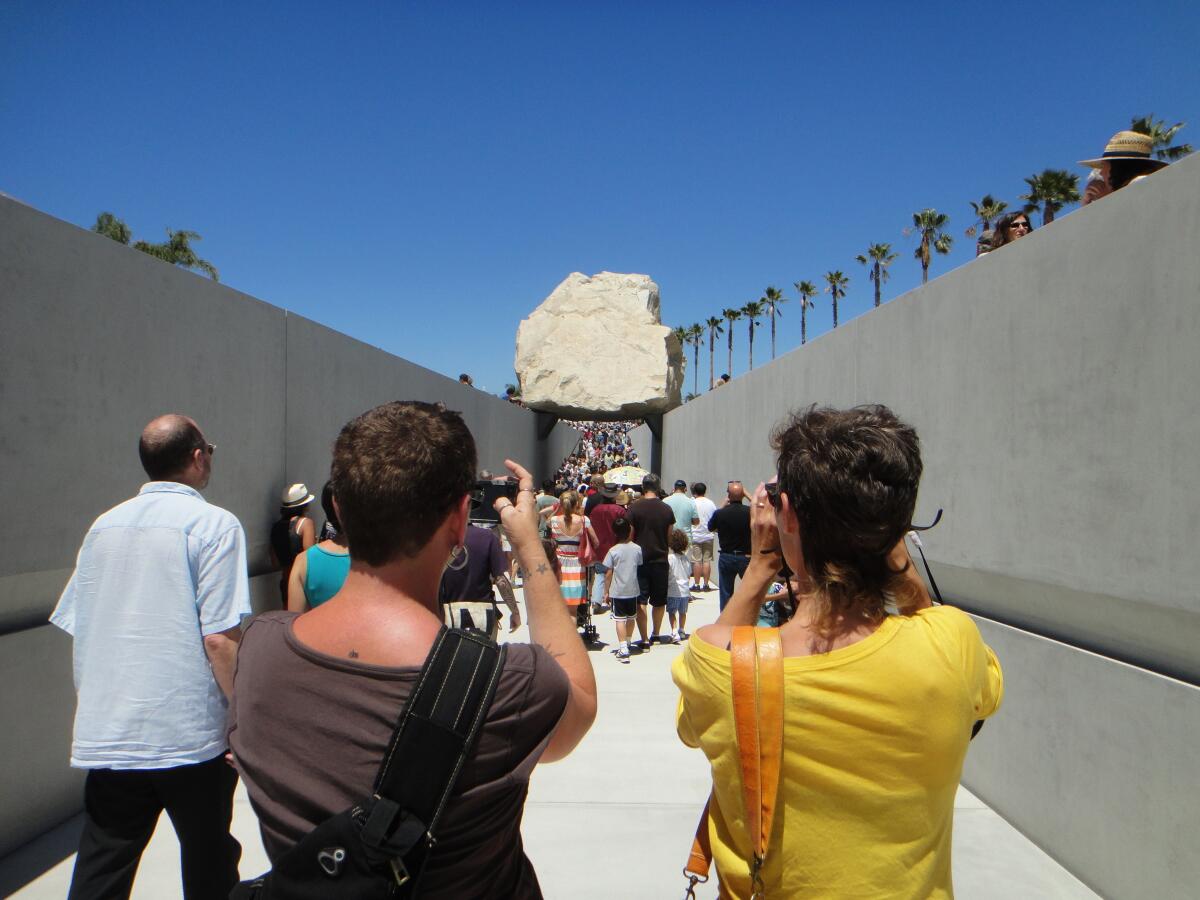
- Share via
L.A. Taco has chosen the 69 best tacos in the city, and that means it’s time to get eating. I’m art and design columnist Carolina A. Miranda of the Los Angeles Times, here with all the essential arts news and lamb barbacoa:
Museum fail?
“The art world likes to think of itself as a bastion of progressive values,” write journalists Charlotte Burns and Julia Halperin in a new report. “But data shows that its perception of progress far outpaces reality.”
For four years, Burns, an independent journalist, and Halperin, the outgoing executive editor at Artnet, have been focused on numbers: Whose work is being acquired by museums? Whose work makes it to auction? Which groups are being over- and underrepresented? (It was a project that began in 2018, when they began to systematically analyze data related to African American representation in U.S. museums and the art market.)
Their latest report looks at the representation of women and Black artists in museums and the art market. You might imagine, given all the traction of the social movements of the past decade, that we’re amid a tidal wave of change. The hard reality? Not so much.
Make the most of L.A.
Get our guide to events and happenings in the SoCal arts scene. In your inbox once a week.
You may occasionally receive promotional content from the Los Angeles Times.
The latest Burns Halperin Report, released earlier this week, analyzes acquisitions data from 31 institutions across the U.S. from the period beginning in 2008 and ending in 2020. It shows that progress is slow and wildly uneven, with some steps forward but many steps back.
Let’s start with the bad news. According to their study, museum acquisitions of work by women peaked in 2009 — 13 years ago — back when Barack Obama became president and “Slumdog Millionaire” won best picture. And though Black people represent almost 14% of the U.S. population, they only accounted for 2.2% of museum acquisitions during this period, with Black women and female-identifying artists accounting for a paltry 0.5% of total acquisitions.
The market, likewise, remains wildly inequitable. “At the current rate of growth, we won’t see parity in the auction market for work by female artists until 2053,” the report states. And interest in Black artists’ work has been up and down: The amount spent climbed by 400% between 2008 and 2021, but dipped this past year. Moreover, that market is dominated by five artists, with Jean-Michel Basquiat accounting for two-thirds of all the money spent on Black U.S. artists at auction.
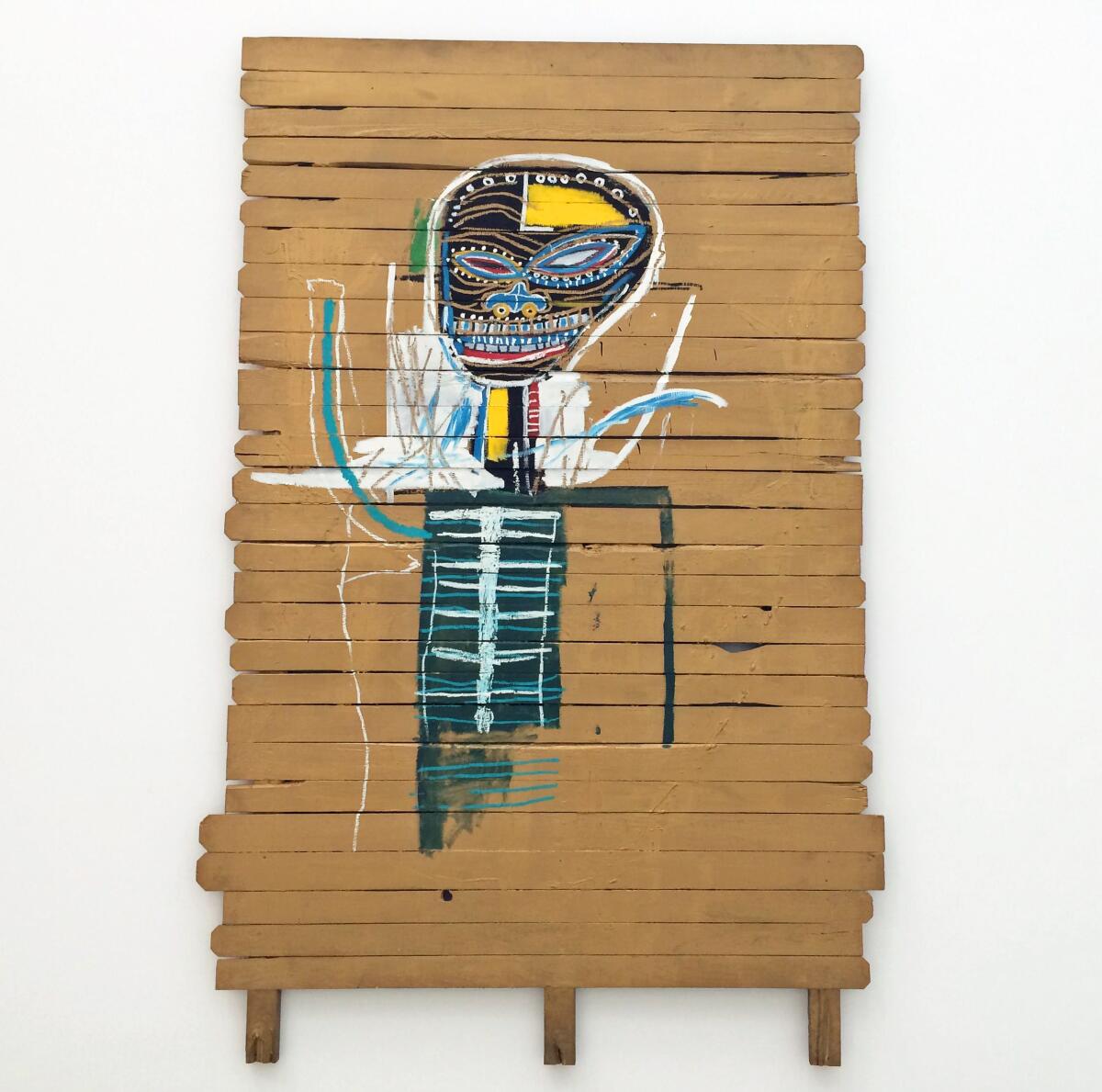
There are some glimmers of hope. Museum purchases of work by women and Black artists — objects acquired by museums from their own budgets rather than received as gifts — have climbed over the period reviewed in the study. And West Coast museums rank above the national average in acquisitions of work by women. L.A.’s Hammer Museum, moreover, was one of three institutions namechecked for its diverse collecting practices. (The data, unfortunately, doesn’t track Latino representation or underrepresentation — a big issue in L.A.)
Burns and Halperin have published their report and their methodology at Artnet.com, along with a series of related essays by an array of contributors examining different aspects of inequity and representation in museums and the art market. (They are still in the process of rolling out the story package.)
On their face, the numbers may not represent great improvement, but maybe it’s better to think of them as a foundation. As Guggenheim Museum Director Naomi Beckwith writes in her contribution to the project: “The needle hasn’t much moved. This is not a sign of failure but rather a cautionary measure, revealing how much work we have ahead of us as a field.”
Find the entire Burns Halperin report, along with related essays, at this link.
On and off the stage
The musical “Ain’t Too Proud — The Life and Times of the Temptations” is on the stage at the Ahmanson through Jan. 1. Times culture writer Jessica Gelt sat down with the group’s last surviving member, Otis Williams, along with the Temptations’ longtime manager, Shelly Berger. Also in on the convo were the actors who play them in the show: Marcus Paul James and Reed Campbell. How does Williams feel about having a musical depicting his life? “I’m like a little kid in amazement.”

In Justin Tanner’s “Little Theatre,” he tells the story of a young playwright struggling to come into his own in ‘90s-era Los Angeles — a theatrical work about theater that is also about contending with the traumas of the past. Staged by Rogue Machine at the Matrix Theatre, Times theater critic Charles McNulty finds it a “well-wrought production” that evokes “a vivid sense of the period.”
McNulty also checked Broadway diva Chita Rivera‘s cabaret show at the Segerstrom Center in Costa Mesa. “Chita: The Rhythm of My Life,” he reports, “threw off enough sparks of magic to make the show a tender get-together for her fans.”

Plus, Times reporter Ashley Lee gets into what makes Emma Thompson such a great villain as Agatha Trunchbull in “Roald Dahl’s Matilda the Musical” on Netflix. “It’s important that Matilda has the enemy she deserves,” says the film’s director, Matthew Warchus, “for her victory at the end to be meaningful.”
One of the breakout stars of ABC’s “Beauty and the Beast: A 30th Celebration” is Joshua Henry, who plays Gaston. He talks to Lee about what it meant to transform for the role — including real muscles to fake hair.
Classical notes
When it premiered in 2004, “The Tristan Project” transformed Wagner’s “Tristan and Isolde” for a new generation. Now, almost two decades after its premiere, it is back — and Gustavo Dudamel is directing. “This is his first time conducting an opera that he has long been obsessed with,” writes Times classical music critic Mark Swed, “and the circumstances of doing it with [Peter] Sellars’ staging and [Bill] Viola’s videos in Disney is literally a trial by fire and water.”
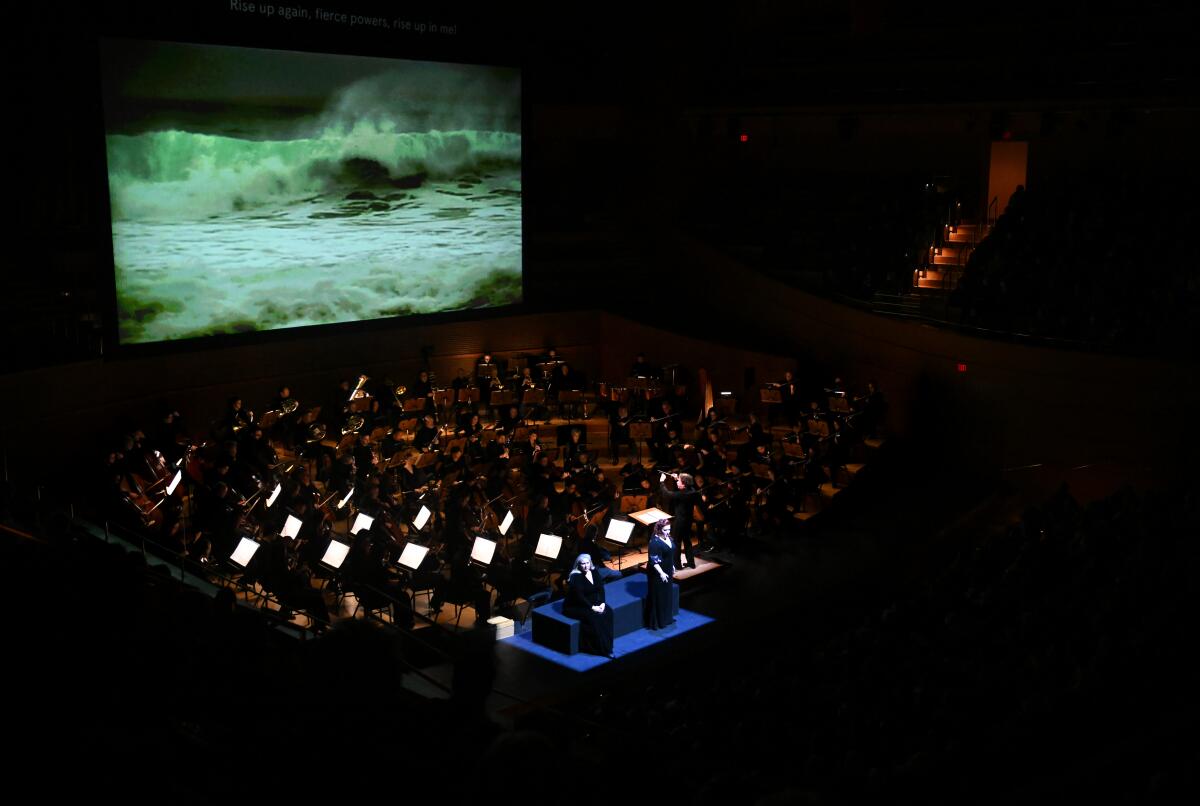
In the galleries
Art critic Christopher Knight paid a visit to the Huntington to check out “Inspiring Walt Disney: The Animation of French Decorative Arts,” which looks at how Rococo Europe inspired aspects of the Disney aesthetic — and he was not impressed. “Art museums have a really tough time dealing with Hollywood product in a coherent and illuminating way,” he writes. Though he did dig those “wildly crazy” potpourri tower vases from the 18th century.
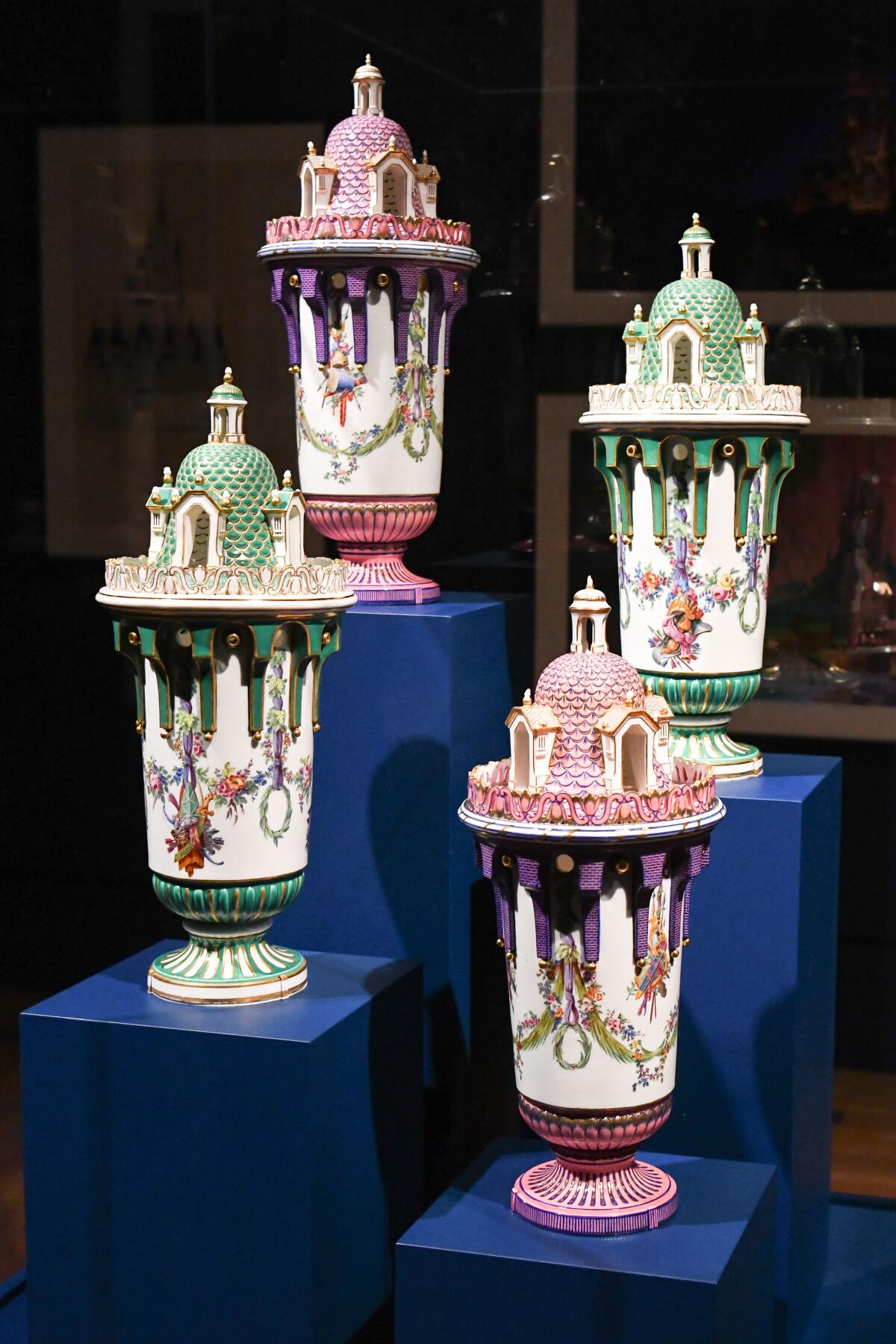
An installation in Glendale by the She Loves Collective, crafted from thousands of inscribed ribbons, serves as commemoration of the Artsakh/Second Nagarno-Karabakh War in 2020.
Essential happenings
Looking for things to do? My colleague Steven Vargas rounds up the best in his weekly L.A. Goes Out newsletter, including performance, art and film — as well as all the top events for the holidays.
Design time
Lisa Boone has a look at a new ADU unit in the Pacific Palisades that manages to pack a kitchen, living room, bedroom and bathroom into a tight 290 square feet. The interiors are by Kristen Gundersen and Jenna Richter of Studio.Ashten, and they channel a Moroccan/Mediterranean vibe. Very into the Moroccan zellige tile on the exterior.
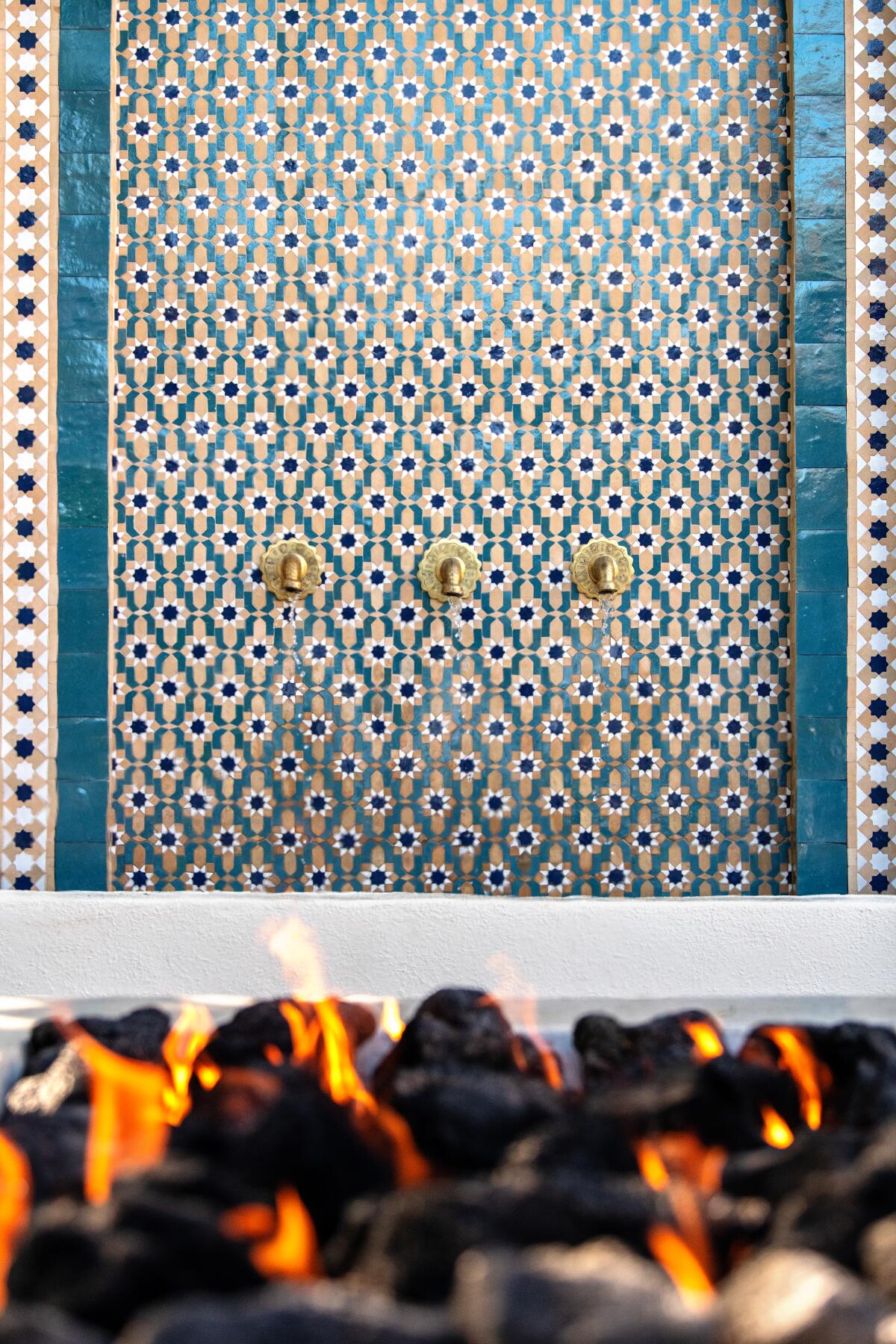
Plus: A round-up of the best book covers of 2022.
See you in Sicily
As a former travel writer, I got just a little bit inhaled by HBO’s “The White Lotus” for its untimely deaths, melodramatic plot twists and sumptuous settings. I wrote about what the show nailed about the theater that is the tourism industry — “the ultimate immersive experience in which everyone and everything has a role to play.”
However, demerits to the location scouts for going all the way to Sicily and not filming a single scene at Alberto Burri’s monumental art piece “Cretto di Buri.”
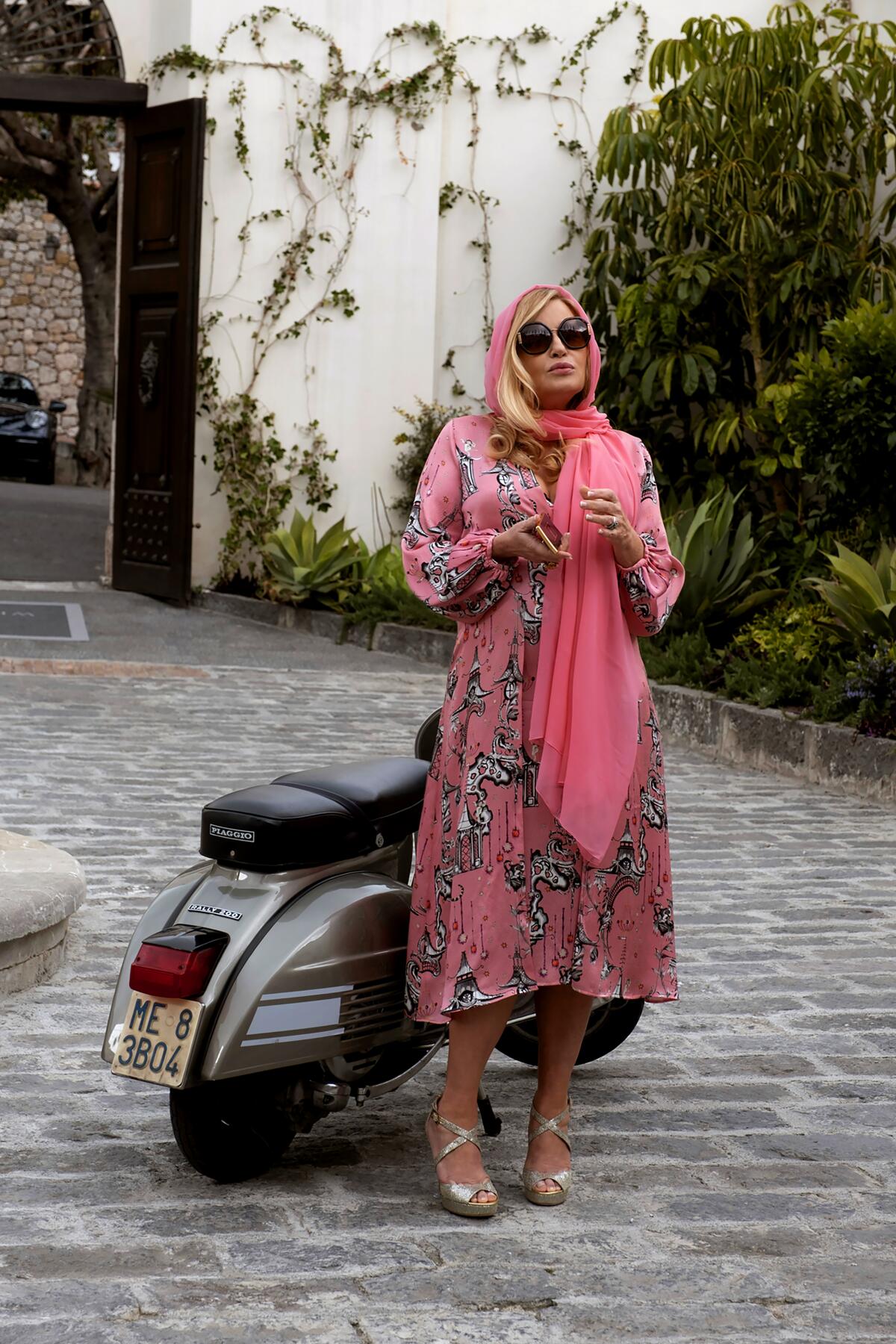
Moves
Bookforum announced this week that its current issue would be its last, leaving a thinning number of publications devoted to literary issues. Times contributor David L. Ulin writes an appreciation to a magazine that “reminds you that literature is a collective soul.”
Adriano Pedrosa, artistic director of the Museu de Arte de São Paulo, has been named director of the 2024 Venice Biennale, the first Latin American to organize the art show.
Enjoying this newsletter? Consider subscribing to the Los Angeles Times
Your support helps us deliver the news that matters most. Become a subscriber.
Anne Helmreich is the new director of the Smithsonian Institution’s Archives of American Art.
Painter Robert Vargas, known for his towering murals of people around L.A., has had a Boyle Heights intersection named after him.
Speaking of towering murals: Violinist Julie Gigante, whose visage looms over the 110 in a mural by Kent Twitchell, is retiring from the Los Angeles Chamber Orchestra after 27 years.

The Huntington Library has acquired the papers of novelist Thomas Pynchon.
The Washington Post, unfortunately, has laid off Pulitzer-winning dance critic Sarah L. Kaufman. Her final dispatch was on “a thoughtful new work” inspired by the life of Evita Perón.
Passages
Herbert Deutsch, a co-inventor the Moog sythesizer, an instrument that helped revolutionize the sound of music, has died at 90.
Angelo Badalamenti, the composer who wrote the scores for some of David Lynch’s most iconic projects, including “Twin Peaks” and “Blue Velvet,” has died at 85.

Judith Lauand, the only woman in the Grupo Ruptura, a generation of Brazilian concrete painters who broke with figurative imagery in favor of hard-edged geometries, has died at the age of 100.
Rafael Cauduro, a Mexican muralist known for unsentimental, iconoclastic works that drew influences from the urban sphere and commented on topics such as the failure of Mexico’s justice systems, is dead at 72.
Daniel Brush, a reclusive artist know for creating unique works of jewelry and sculpture — say, an assemblage of golden beads fired together into the form of a dome — is dead at 75.
Beryl Grey, a British ballerina known as much for her glamour as her abilities, and the first European to dance with the Bolshoi Ballet in Moscow, is dead at 95.
In other news
— The NFT boom and bust in a single artist profile: Molly Fischer chronicles the work of graphic artist Yam Karkai.
— Pope Francis has announced that he will give three pieces of the Parthenon Marbles to the Greek Orthodox Church previously held in the Vatican’s collections.
— Richmond has removed its last city-owned Confederate monument.
— The Modern Art Notes podcast devotes a recent episode to the Bob Thompson and Picasso shows at the Hammer Museum and another to the Uta Barth show at the Getty.
— Mall Santas are back! Alexandra Lange has a look at their history, with nods to Black Santas, virtual Santas, the first department store Santa and that classic of cinema, “Bad Santa.”
— Cars are pitched as freedom. Scholars Andrew Ross and Julie Livingston see them as “turbo-boosted engines of inequality.”
— This New Yorker review brings together several things that interest me: theater, urbanism, Robert Moses and astute criticism by Vinson Cunningham.
— Molly Ringwald on working with Jean-Luc Godard: “He was the most formal formalist I’ve ever known.”
And last but not least ...
The deep cultural significance of the skin fade and North Face jacket combo.
The biggest entertainment stories
Get our big stories about Hollywood, film, television, music, arts, culture and more right in your inbox as soon as they publish.
You may occasionally receive promotional content from the Los Angeles Times.




